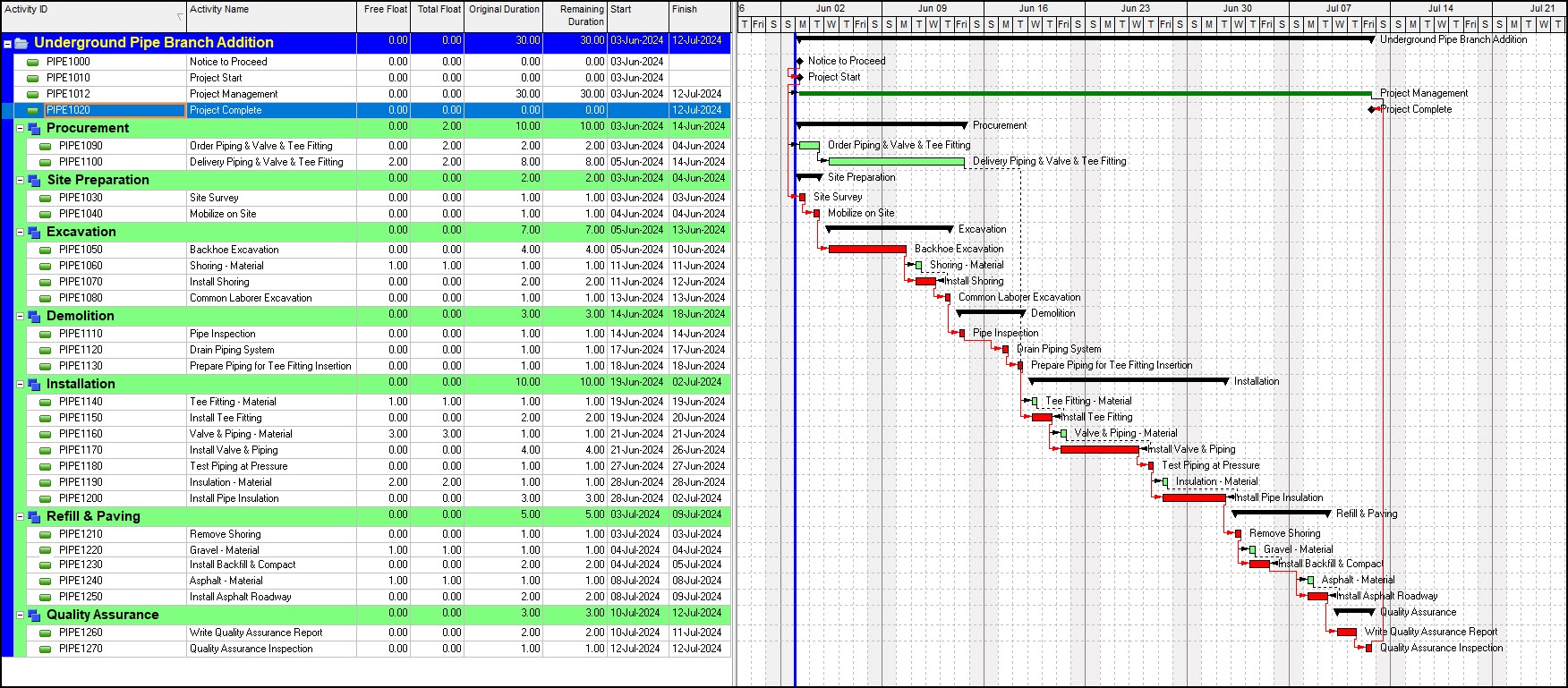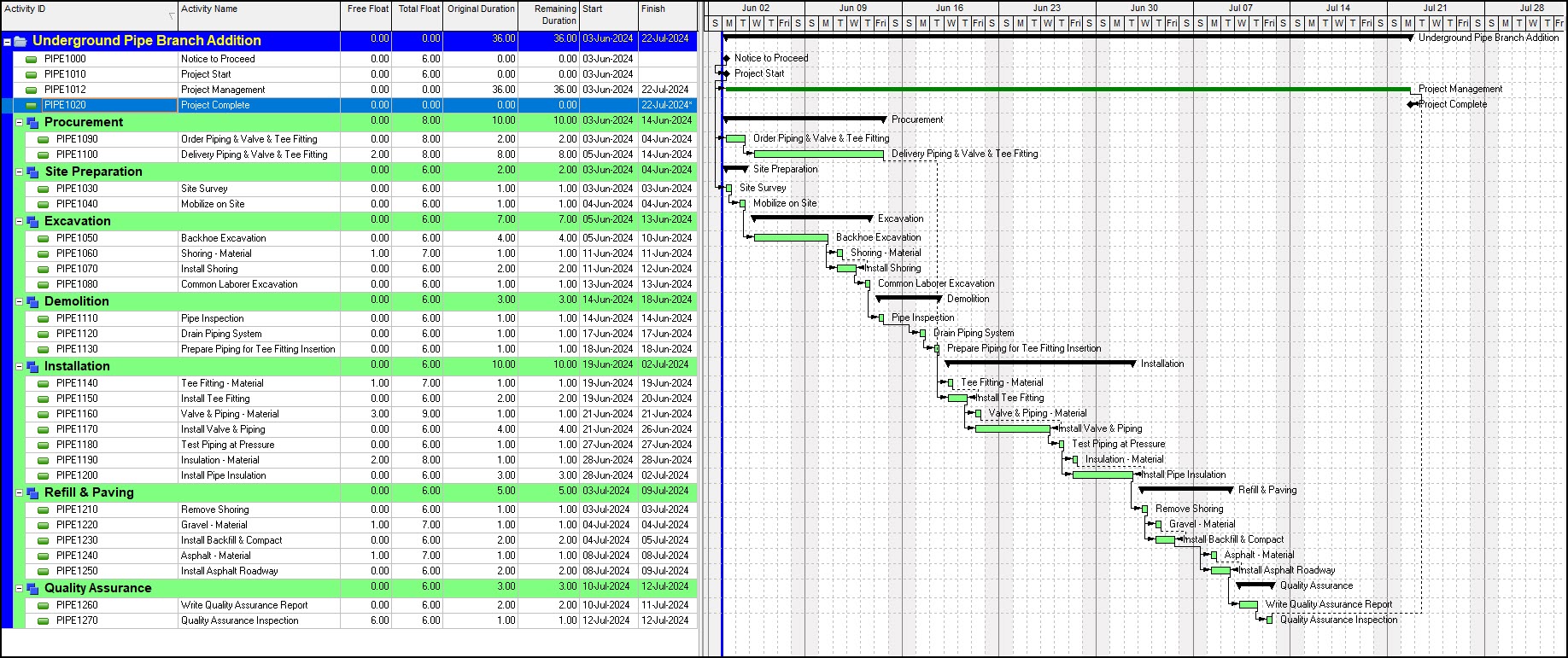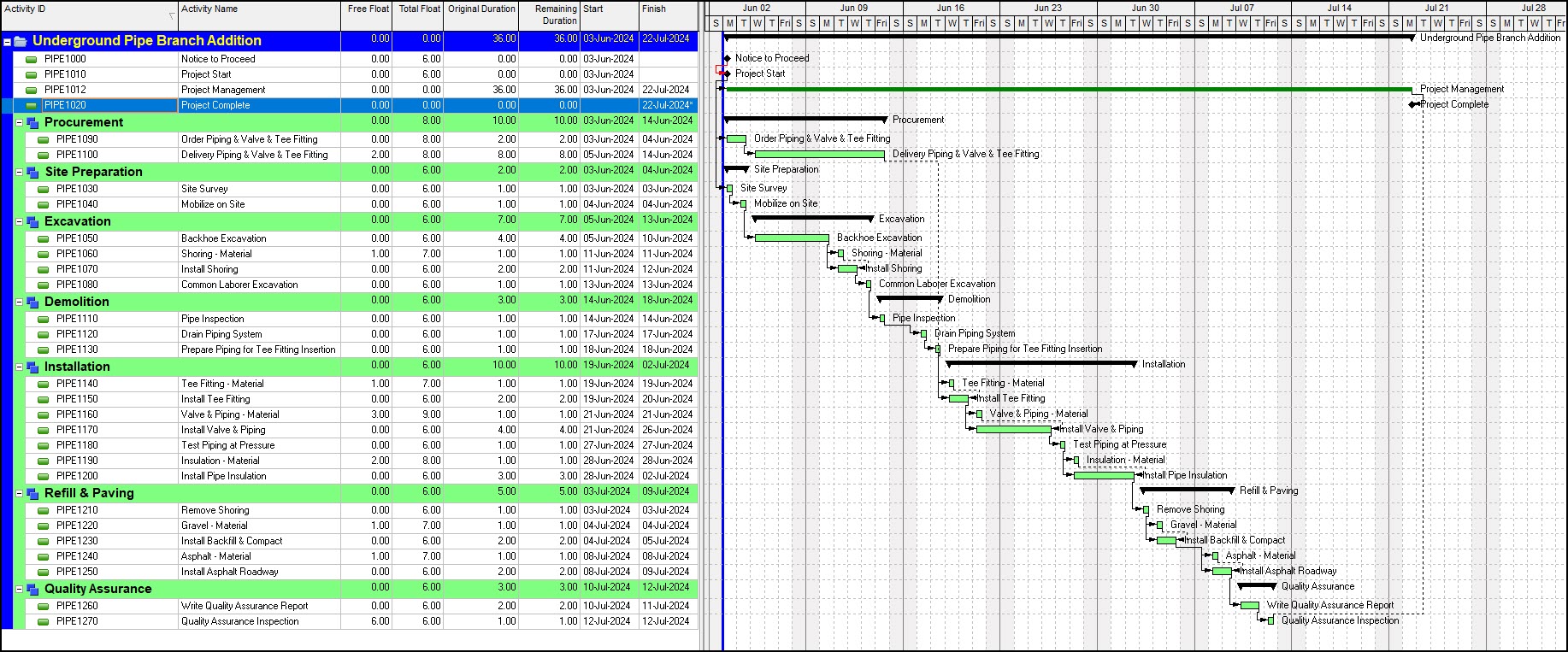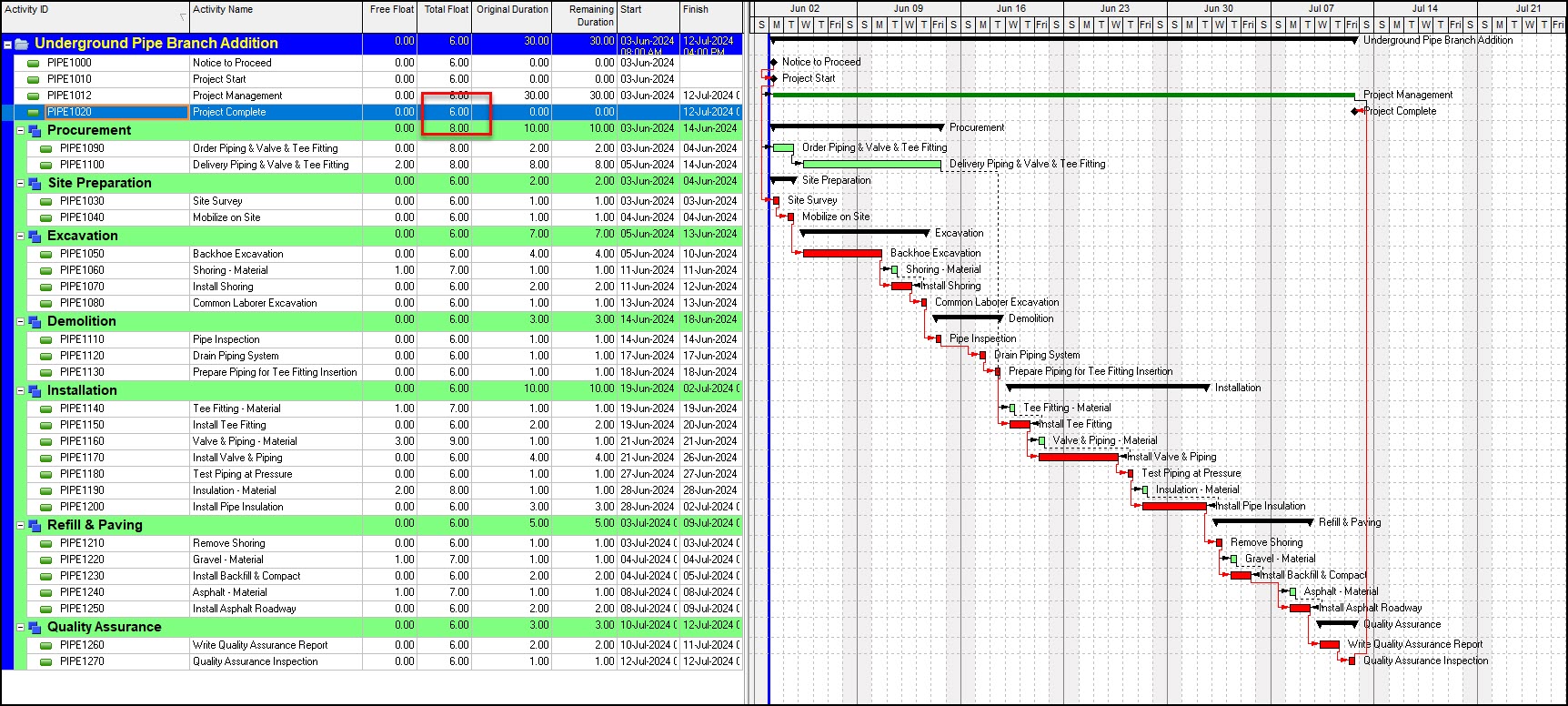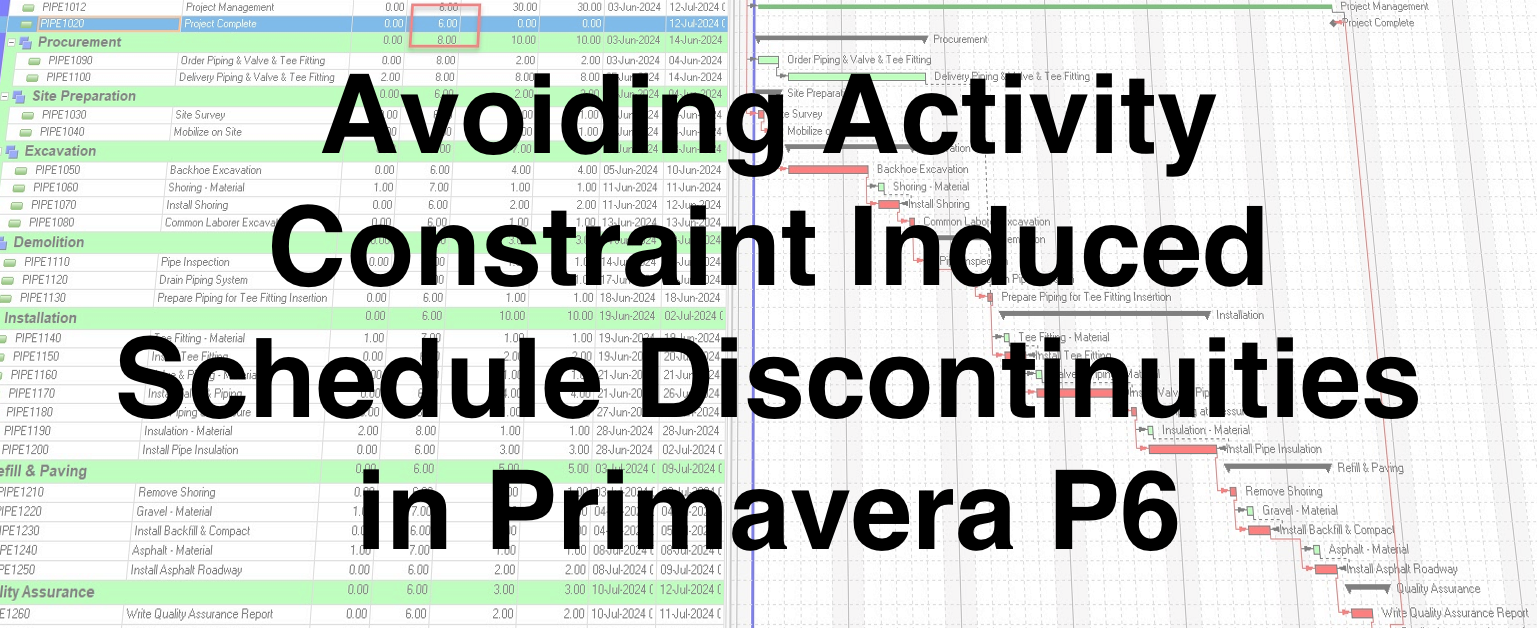 Activity Constraint Induced Schedule Discontinuities
Activity Constraint Induced Schedule Discontinuities
We recently worked with a client that had a customer that wanted him to insert a mandatory finish activity constraint on the project finish milestone, but this created a critical path discontinuity. The question was how to represent the critical path when using a mandatory activity constraint? Let’s take a look at this in more detail.
The critical path is a very important concept in scheduling. It tells you the duration of your project. Any activity on the critical path cannot delay without delaying the end date of the schedule. As the scheduler, you want to know every activity along the critical path, so you can monitor them closely. And to shorten the schedule you will have to compress activities that lay on the critical path, hence another reason to know your schedule’s critical path.
Activity constraints are problematic because they create breaks in the critical path, so the critical path cannot be seen as a fully connected linkage of activities from project start through project completion.
This article investigates the critical path discontinuity problem, created when activity constraints are inserted in the schedule. It also offes a remedy on how to avoid activity constraint induced schedule discontinuities.
Mandatory constraints are discouraged by most scheduling guidelines for the reasons provided in the “Why you should avoid mandatory activity constraints”.
Therefore, our discussion today does not include Mandatory Constraints, because they typically should not be included in the schedule.
We have in Figure 1 below, our demonstration schedule, a project for an Underground Pipe Branch Addition.
We proceed and insert a 22-Jul-2024 Finish On activity constraint on the Project Complete milestone, Figure 2.
After we recalculate the schedule, we find that our critical path has a break at this Finish On activity constraint, Figure 3.
Note the disappearance of the critical activities in Figure 3. We have lost our continuous critical path from ‘Notice to Proceed’ to ‘Project Complete’, not good. Let us investigate ways to regain our continuous critical path. Sometimes changing the definition of a critical activity works to restore continuity. In the Schedule Options toggle to define critical activities as Longest Path, Figure 4.
The Longest Path setting only includes activities that fall along the longest path as critical activities. If an activity is critical, because of an activity constraint and it does not fall along the longest path, it is not considered critical by the longest path critical activity definition. When we again recalculate the schedule, after specifying schedule options longest path critical activity definition, the discontinuity remains, Figure 5.
That didn’t work. Another approach is to replace the 20-Jul-2020 Finish On activity constraint on ‘Project Complete’ with a 20-Jul-2020 project constraint, Figure 6.
Keep in mind that we maintain the Longest Path definition for critical activities in the Schedule Options settings. The schedule and critical path, after recalculating the schedule, display in Figure 7.
Much better! We have regained our continuous critical path throughout the project schedule. And note the Total Float value of ‘Project Complete’. Currently, the ‘Project Complete’ Total Float is 6-days, which means the current expected finish date is 6-days before the Must Finish By project constraint.
So, good news! We are ahead of schedule. And our approach in using the Must Finish By project constraint and Longest Path critical activities definition worked to simultaneously specify a project deadline and maintain our continuous critical path.
Summary
Critical path discontinuities are a major scheduling issue. Activity constraints have a way of fragmenting the schedule which makes critical activity monitoring and schedule optimization efforts more difficult.
When the activity constraint is replaced by a Must Finish By project constraint in conjunction with the schedule option ‘define critical activities as Longest Path’ the scheduler can model a project deadline and retain the continuous critical path.
The total Float of the ‘Project Complete’ milestone is the difference between the expected project completion date and the contract completion date (CCD), which has been referred to as the schedule Terminal Float.
Sometimes project sponsors request a separate line item to clearly specify the CCD. This adds an element of complexity which makes defining a deadline on a continuous critical path more difficult. But that is a topic of discussion for another blog.

